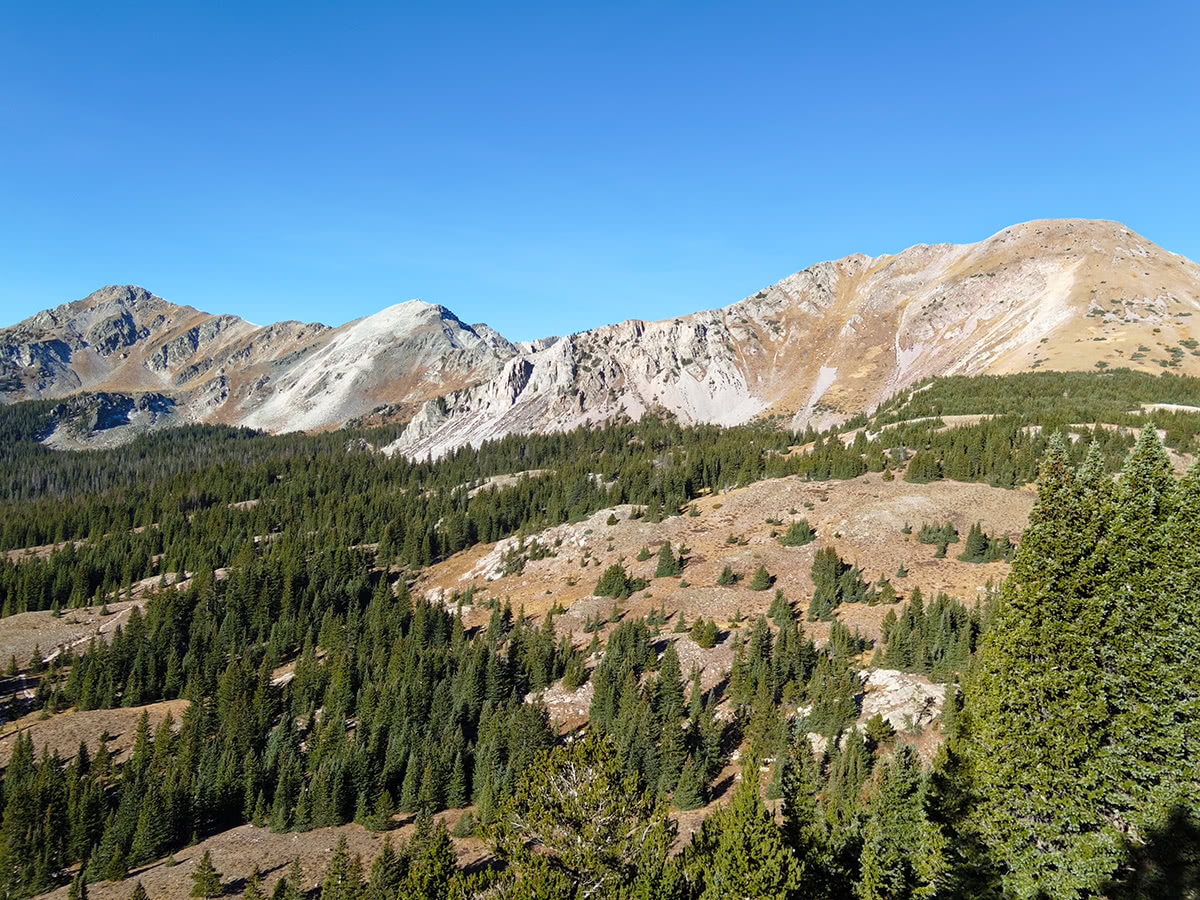Tree Line
Sources: Jake's Nature Blog.
Tree line is an elevation in mountains above which trees simply do not grow. There is a lot that comes into play, but basically at some point the climate (the weather in an area over the year) is just too harsh for trees to survive. It is a combination of things including too cold, too short of a growing season, too much snow and ice, too windy, or not enough moisture. All of these factors come into play and make it impossible for trees to survive above a certain point on the mountain.
The elevation of tree line is not the same at all points in the Rocky Mountains. Remember the reason tree line exists is because above some point trees simply can't survive. Tree line is not a straight line that runs around a mountain. In other words, it is not an abrupt transition from trees to no trees. The level of tree line can vary depending on the micro climate, such as the aspect of the slope. For example, certain areas may be more sheltered from wind, which would allow trees to grow higher there. Additionally, the elevation of tree line decreases as you move north from the Southern Rockies of New Mexico up to the Canadian Rockies. This is because as you move north in latitude the climate becomes colder, making it harder for trees to survive.
Tree line in the Southern Rockies in New Mexico is about 12,000 feet. In Colorado tree line is at around 11,000 to 12,000 feet. The Tetons in Wyoming have a tree line around 10,000 feet elevation. Glacier National Park has a lower tree line at around 6,900 feet on the west slope and 6,000 feet on the east slope.

The above image of Truchas Peak is the second highest peak in New Mexico at 13,108 ft (3,995 m) behind Wheeler Peak. It is in the Sangre de Cristo Mountains 26 miles (42 km) northeast of Santa Fe. It lies within the Pecos Wilderness, part of the Santa Fe National Forest. (The north end of the mountain borders on the Carson National Forest.)




